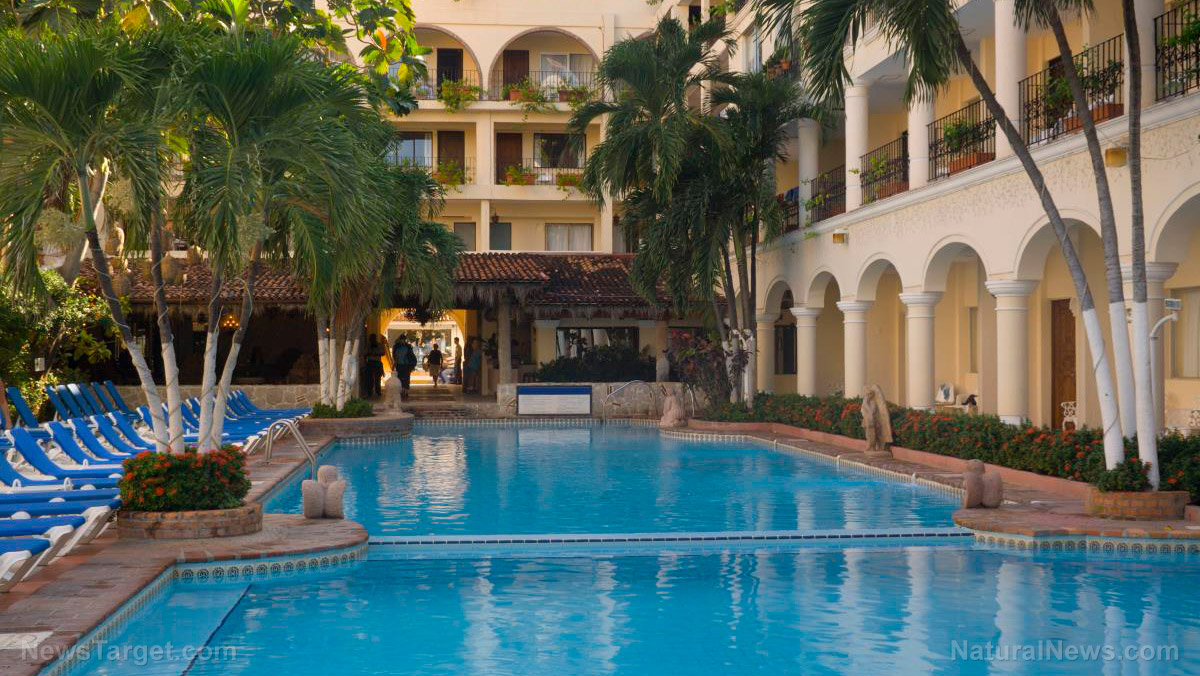Scientists warn about wave of catastrophic earthquakes about to be unleashed from enormous hole discovered in ocean floor
12/28/2016 / By Cassie B.

Scientists are warning that a tear in the Earth’s crust in the Banda Sea to the north of Australia could lead to serious natural disasters such as earthquakes and tsunamis as they get closer to understanding the fault and its ramifications.
Perhaps the word “tear” is misleading; it is actually one of the biggest faults on Earth and it runs right through the Ring of Fire, which is notorious for its volcanic eruptions and earthquakes. Measuring about 60,000 square kilometers in area and 7 kilometers deep, it is roughly the size of Tanzania.
One big issue at play is the fact that earthquakes that already take place around the tear might make it slip, which would lead to violent tremors on the islands that surround it as energy is released in waves.
The other problem is its situation in the planet’s most seismically-active area. The Ring of Fire is home to 90 percent of the planet’s earthquakes. It stretches from New Zealand to the top of Australia, past Indonesia and Japan, down the West Coast of the U.S. and down to the bottom of South America.
Seismic activity hotbed
This area has been a hotbed of activity recently, with more than 100 people killed and 84,000 people left homeless following a 6.5-magnitude earthquake in western Indonesia earlier this month. A 6.9-magnitude quake shook the coast of Japan in already-troubled Fukushima last month, spurring tsunami waves. In August, Queensland, Australia, saw its biggest earthquake in the last two decades when a 5.8-magntiude quake hit the coast near Bowen.
In 2004, an enormous earthquake under the sea led to the tsunami that affected many countries in the Indian Ocean and left 170,000 people dead. The Ring of Fire was also home to the strongest earthquake ever recorded, a 9.5-magnitiude quake that hit Chile in the 1960s.

While the hole, which is called the Banda Detachment, is not exactly a new discovery, no one could say for sure exactly how it became so deep until now. After finally being able to see and document the fault, scientists have determined that it was created through a process known as subduction wherein one tectonic plate moves beneath another and is then forced downward, plunging through the crust into the mantle. It is hoped that the discovery will help to assess the dangers of tsunamis and earthquakes in the future.
Nuclear plants near fault lines pose grave dangers
An earthquake like the one in Japan last month could cause major problems around the world. The still-unrepaired nuclear fuel rod pools affected by the 2011 tsunami at the Fukushima-Daiichi nuclear power plant are a serious risk to individuals as an event could cause gigantic clouds full of radioactive material to form in the Northern Hemisphere.
California has two nuclear reactors close to fault lines: San Onofre and Diablo Canyon. The reactor at San Onofre, which sits between San Diego and Los Angeles, was only built to withstand a 7.0 quake, while the Diablo Canyon plant can only handle quakes up to 7.5 in magnitude. It’s important to keep in mind that the quake that struck Japan in 2011 was 9.0 in magnitude, while the Fukushima plant was only built to handle quakes of up to 7.9 magnitude.
Another vulnerable area is Washington’s Hanford Reactor on the Columbia River. This facility is already leaking some radioactive coolant into the nearby groundwater and could lead to a tremendous amount of problems if the area is hit by a major earthquake.
If you live anywhere near the Ring of Fire, it’s a good idea to have a supply of iodine on hand. You’ll want to do everything you can to try to prevent your body from absorbing too much radioactive material. Organic survival food is another thing that can come in handy any place that is subjected to not only seismic activity but also extreme weather like hurricanes and tornadoes.
Sources:
Submit a correction >>
Tagged Under:
earthquake, natural disasters, Ring of Fire
This article may contain statements that reflect the opinion of the author





















